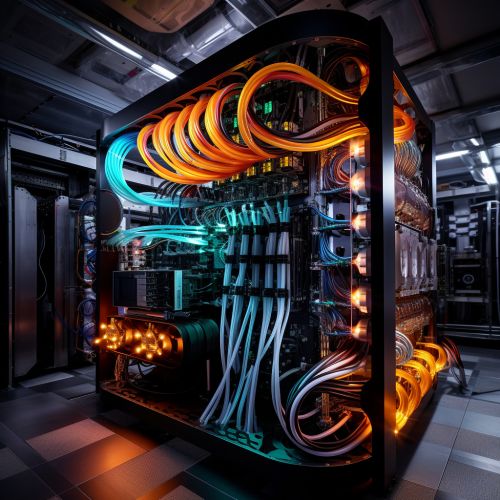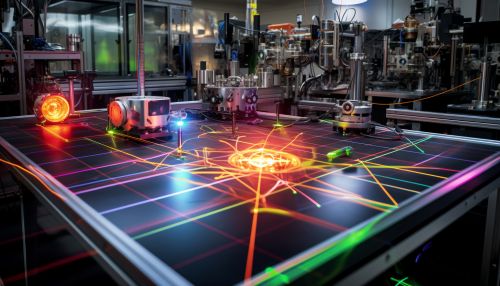Advances in Quantum Computing with Quantum Teleportation
Introduction
Quantum computing is a rapidly evolving field that leverages the principles of quantum mechanics to perform computational tasks. One of the key advancements in this field is the concept of quantum teleportation, a process that allows the state of a quantum system to be transmitted from one location to another, without the physical transportation of the system itself. This article delves into the intricacies of quantum computing and quantum teleportation, exploring their potential applications and the challenges they pose.


Quantum Computing
Quantum computing is a computational paradigm that utilizes quantum bits, or qubits, as its fundamental unit of information. Unlike classical bits, which can either be 0 or 1, qubits can exist in a superposition of states, allowing them to be both 0 and 1 simultaneously. This property, along with entanglement and interference, allows quantum computers to solve certain problems much faster than classical computers.
Qubits
The qubit is the basic unit of quantum information. It is a two-state quantum-mechanical system, analogous to the binary system used in classical computing. However, unlike binary systems, qubits can exist in a superposition of states, meaning they can represent 0, 1, or any quantum superposition of these two qubit states. This allows a quantum computer with n qubits to store 2^n different states simultaneously.
Quantum Gates
In quantum computing, operations on qubits are performed by quantum gates, which are the quantum equivalent of classical logic gates. Quantum gates are reversible and their operations can be represented as unitary matrices. Some common quantum gates include the Pauli-X, Pauli-Y, Pauli-Z, Hadamard, and CNOT gates.
Quantum Algorithms
Quantum algorithms leverage the properties of qubits to perform computations that would be infeasible or impossible with classical computers. Some of the most well-known quantum algorithms include Shor's algorithm for factorizing large numbers, and Grover's algorithm for unstructured search problems. These algorithms demonstrate the potential of quantum computing to revolutionize fields such as cryptography and database searching.
Quantum Teleportation
Quantum teleportation is a process that allows the state of a quantum system to be instantaneously transferred from one location to another, without the physical transportation of the system itself. It is important to note that quantum teleportation does not involve the transfer of matter or energy, but rather the transfer of quantum information.


Quantum Entanglement
Quantum teleportation relies on the phenomenon of quantum entanglement, where two or more particles become linked and the state of one particle can instantaneously affect the state of the other, no matter the distance between them. This "spooky action at a distance", as Einstein famously called it, is a fundamental aspect of quantum mechanics and forms the basis for quantum teleportation.
Process of Quantum Teleportation
The process of quantum teleportation involves three main steps: entanglement, Bell state measurement, and quantum state transmission. Initially, a pair of entangled particles is created. The state of the particle to be teleported is then measured in conjunction with one of the entangled particles, resulting in a Bell state measurement. This measurement collapses the entangled state and the result is sent to the receiver. The receiver then performs a unitary transformation on their entangled particle based on the measurement result, resulting in the teleportation of the original quantum state.
Applications and Challenges
Quantum computing and quantum teleportation have the potential to revolutionize numerous fields, including cryptography, material science, and medicine. However, these technologies also pose significant challenges, such as the difficulty of maintaining quantum coherence and the need for error correction.
Applications
Quantum computing could potentially solve problems that are currently intractable for classical computers. For instance, quantum algorithms could be used to factorize large numbers, a task that is essential for modern cryptography. Quantum teleportation, on the other hand, could enable the creation of quantum networks, where quantum information is transmitted over long distances.
Challenges
Despite their potential, quantum technologies also face significant challenges. One of the main challenges is maintaining quantum coherence, as qubits are extremely sensitive to their environment and can easily lose their quantum state. Additionally, quantum error correction is a major area of research, as quantum operations are prone to errors due to the probabilistic nature of quantum mechanics.
